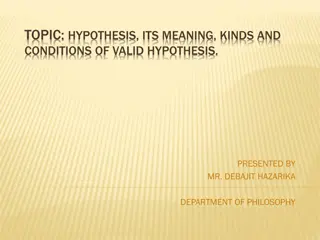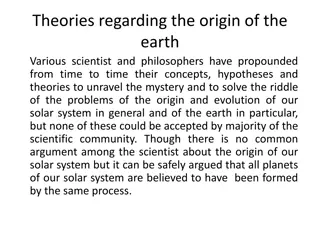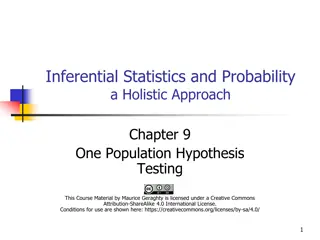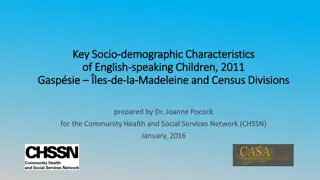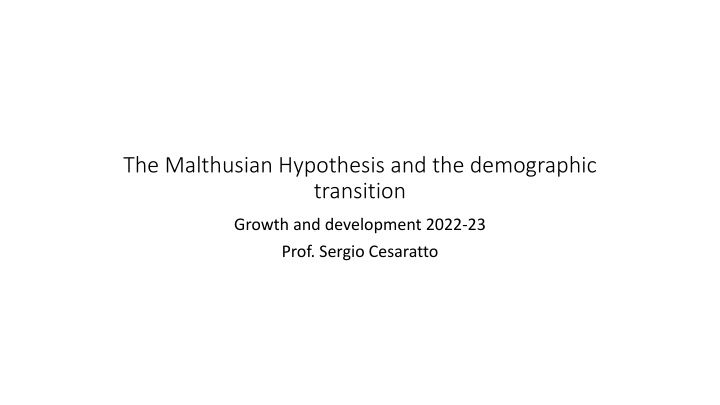
The Malthusian Hypothesis and the demographic transition
Exploring the Malthusian Hypothesis, this content delves into the impact of limited resources on population growth, the role of innovations, and the evolution of living standards over time. It discusses how technological progress has influenced demographic patterns and revised traditional theories.
Download Presentation

Please find below an Image/Link to download the presentation.
The content on the website is provided AS IS for your information and personal use only. It may not be sold, licensed, or shared on other websites without obtaining consent from the author. If you encounter any issues during the download, it is possible that the publisher has removed the file from their server.
You are allowed to download the files provided on this website for personal or commercial use, subject to the condition that they are used lawfully. All files are the property of their respective owners.
The content on the website is provided AS IS for your information and personal use only. It may not be sold, licensed, or shared on other websites without obtaining consent from the author.
E N D
Presentation Transcript
The Malthusian Hypothesis and the demographic transition Growth and development 2022-23 Prof. Sergio Cesaratto
Impercetible Impercetible growth growthof GDP p.c. and of GDP p.c. and population population From Maddison we noted the impercetible rates of growth of GDP p.c. and population until the industrial revolution Various theories. New institutional economics: slow technical progress due to the lack of protection of property rights. Malthusian hypothesis: the force that limited human population in face of potential fertility was the limited availability of resources, in particular of fertile land. An increasing population over a limited amount of land would generate decreasing returns and lower standard of life. This would check fertility and population growth. A neoclassical interpretation is natural. Eventually society would reach a level of income commensurate with constant population.
The The Malthusian Malthusian hypothesis hypothesis For Malthus, limitations in the available resources would limit fertility of animals and humans. Humans can of course reduce fertility as a deliberate choice (as in a sense has happened in the last two centuries, what Malthus did not foresee) In the next figures we show the effects of the introduction of an innovation (say irrigation or the plaugh) on GDP p.c. and population in the short and then in the long run.
The The Malthusian Malthusian hypothesis hypothesis The immediate effect of the improvement will be to raise living standards, just as we expect. But in the long run people, who are better off, will generate more children. Population growth will put some pressure on existing resources (mainly land), with decreasing returns the economy falls back to the old equilibrium with a larger, but once again stationary population and GDP pc. For Malthus only moral restraint would prevent the excess of birth, next figure This is why Malthus was against improving wages and the welfare of the lot: this would just be dissipated in population growth.
The The rupture rupture of the of the Malthusian Malthusian hypothesis hypothesis Over the last two decades, living standards in the richest countries have risen drammatically while the growth of population has fallen What happened is that technical progress has been strong enough to compensate the scarcity of some resources like land (recall that in modern time the level of population has increased also in the richest countries putting pressure on natural resources, although at lower and lower rates). What the Malthusian model broke is the positive relation between fertility and standard of living, that became progressively negative in develp countries. It is still true that in the poorest developing countries little improvements in the standards of living led to a demographic explosion. Is the Malthusian hypothesis still valid for those countries (and for the past)? In actual I have not a literature critical of the Malthusian hypothesis to present. But certainly it exists and some of you might want to look at it in the future.
Extension Extension We shall study in the second part of the course population growth in the neoclassical Solowian growth model. Indeed the result is somehow consistent with the Malthusian hypothesis since a rise in the rate of population growth will put pressure on the other scarce resources (capital and land) so that decreasing marginal returns lead to a lower p.c. output. NB in Solow s model as we shall see it, there are not natural scarce resources, so the rate of growth of GDP will be positive even with a positive labour force growth. GDP p.c. is however constant. GDP p.c. increases with a positive rate of technical progress.
The The demographic demographic transition transition in a in a nutshell nutshell I I Let us refer to table .7a from Maddison
The The demographic demographic transition transition in a in a nutshell nutshell II II We see that population in western countries first rose, and the fell. Before or later, in the last two centuries most of the world regions went through the so-called demographic transition: a transition from fast growing populations and high mortality (low life expectancy) to stagnating population and low mortality. The demographic transition has two components: mortality transition (higher life expectancy) and fertility transition (lower fertility rates). Given life expectancy, a total fertility rate of two children per women (over their productive life) produce a stagnating population. Life expectancy rose first in the XIXth century for better nutrition and public health, only recently for improved medical treatments.
The The demographic demographic transition transition in a in a nutshell nutshell III III Increases in life expectancy and total fertility rates do interact: given the reproduction behaviour, if women their fertile period is longer their fertility rate would rise. Why the fertility transition: Larger diffusion and public acceptance of contraception (although well known from the antiquity) Income and substitution effects: income effect you may afford more children Substitution effect children are a normal good, if your income rises you may afford and wish other joys of life (raising children is timing and heavy!). Raising children has been increasingly costly (education in modern societies is very long while in old times they would bring home some income very soon) you prefer quality to quantity.
The The demographic demographic transition transition in a in a nutshell nutshell III III Please go to World Population Prospects 2022 Read at least the key message Here we comment few tables.




